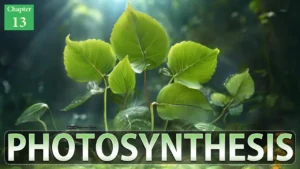Table of Contents
Parenchyma Tissue Characteristics, Types and Functions
This article we will discuss about Parenchyma Tissue Characteristics, Types and Functions
Parenchyma Tissue characteristics
- Parenchyma are living and arranged loosely with intercellular spaces
Cells are compactly packed or they have intercellular spaces between them - Parenchyma consist of oval, round, polygonal, elongated or irregular cells
- Parenchyma cells are thin walled. Cell wall is made up of pectocellulose
- It is most abundant tissue, found in:- cortex, pith and leaf mesophyll
- Single parenchyma cell of a zygote has an ability to develop into an entire plant. These cells are called totipotent cells
- Parenchyma cells may be associated with other types of cells to form heterogeneous complex tissues such as parenchyma of xylem and phloem
- Parenchyma cells are essential for activities like photosynthesis, storage, secretion, assimilation, respiration, excretion and radial transport of water and solute
Types of parenchyma tissue
Parenchyma cells can be categorised based on their structure, location and functions performed. The main parenchyma tissues are:
1. Chlorenchyma
- Parenchyma cells contain chloroplast
- Found in mesophyll of leaves
- Function is photosynthesis
2. Aerenchyma
- Parenchyma cells are round in shape. They surround by air chambers
- Found in cortex region of water plants
- Function is provides buoyancy to aquatic plants
3. Mucilage parenchyma
- Parenchyma cells contain large vacuoles and mucilage
- Found in fleshy plants
- Function is storage of water
4. Stellate Parenchyma
- Parenchyma cells contain air spaces and star shaped
- Found in leaf bases of banana
- Function is provide mechanical support to leaf
Functions of parenchyma
- The main function of parenchyma tissue is storage of food
- Parenchyma cells transport nutrients and other chemicals
- chloroplasts present in the mesophyll and the other green parts of the plant, and perform photosynthesis
- In gymnosperms, the parenchymatous cell have spiny projections that help in the protection from predators
- Parenchyma cells have an ability to transform to the other types of cells and act as a precursor for other types of cells
- In hydrophytic plants it provides buoyancy
- Parenchyma cells that retain their ability to divide even on maturity help in regeneration and wound healing.
For more detailed information about plant anatomy, download now full study material as PDF



![[PPT] The living world Class 11 Notes](https://rajusbiology.com/wp-content/uploads/2024/06/PPT-The-living-world-Class-11-Notes-300x169.webp)
